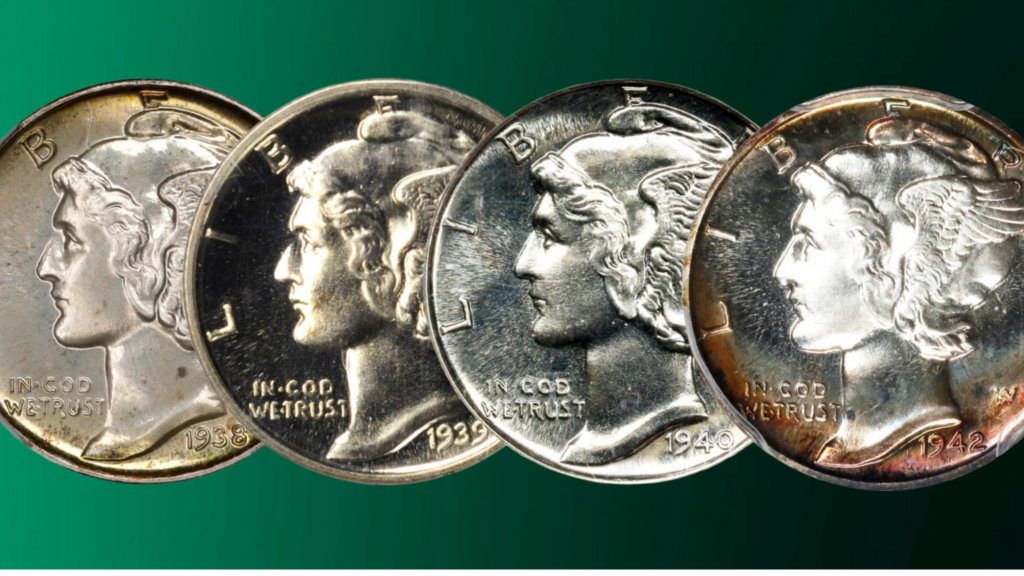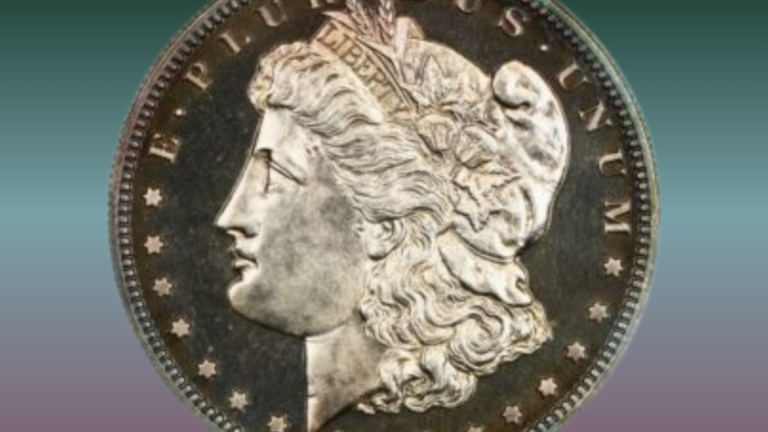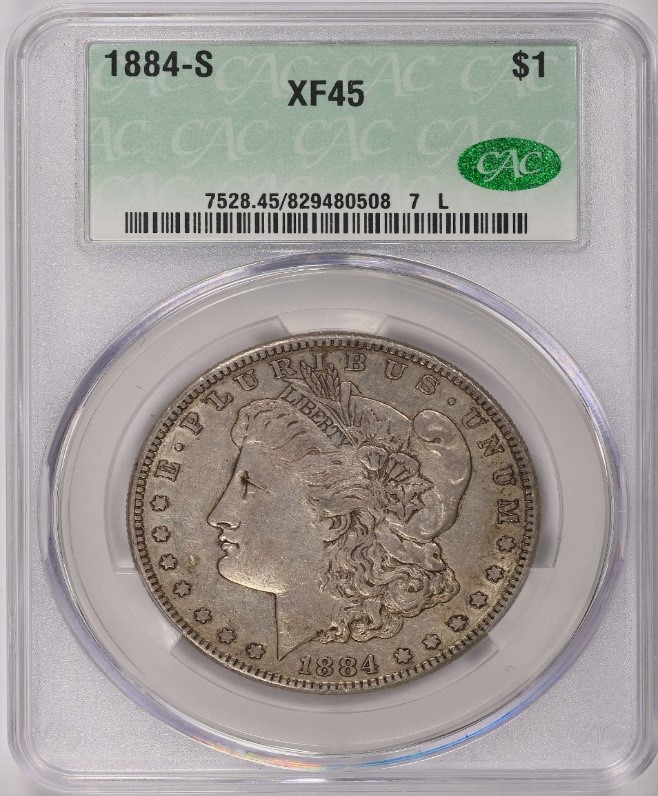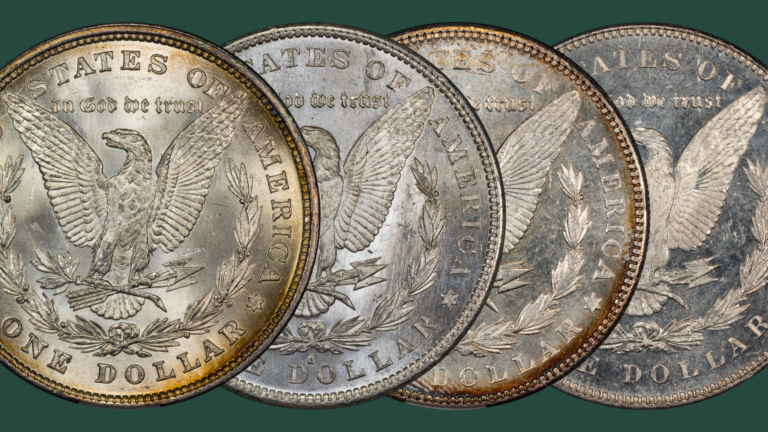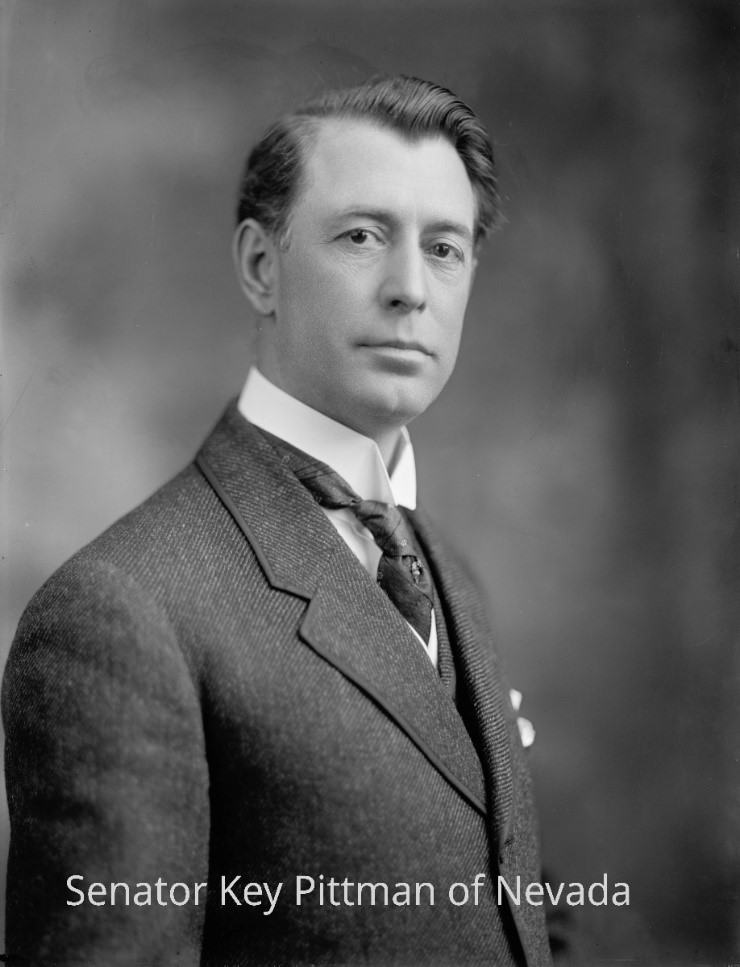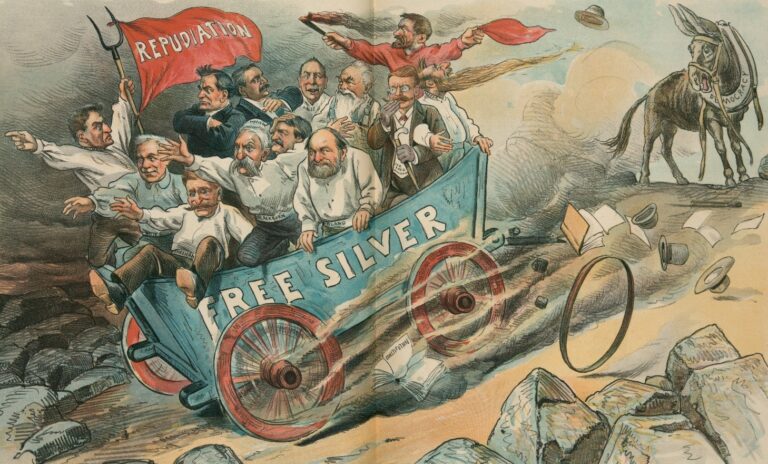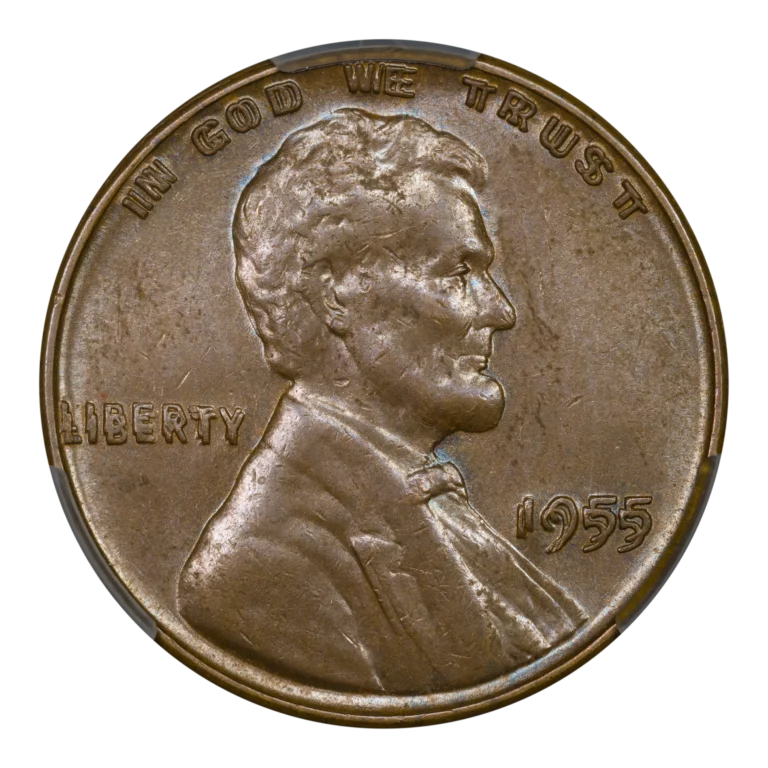by Greg Reynolds
This is the sixth in a series on practically collecting Mercury dimes. Here, Proofs from 1936 to 1942 are covered.
Before the 1980s, it was typical for collectors of high quality coins to include Proofs and business strikes in the same sets, with the idea that Proofs were superior to business strikes. In recent decades, the emphasis has been upon the notion that Proofs are a different species, the products of different methods of manufacture.
The percentage of collectors who regard Proofs as being superior to business strikes has fallen, and most consider Proofs to be different rather than ‘better.’ Indeed, I have met quite a few collectors who prefer business strikes to Proofs. Some like the luster and animated nature of many business strikes, or the visual effect of toning over lustrous surfaces. I like both Proofs and business strikes.
So far in the twenty-first century, most collectors who collect both Proofs and business strikes separate sets of Proofs from sets of business strikes. In my view, the ‘old way’ made more sense. I suggest including Proofs and business strikes in the same sets. Proofs are coins, too, and a set becomes more interesting if it features a mix.
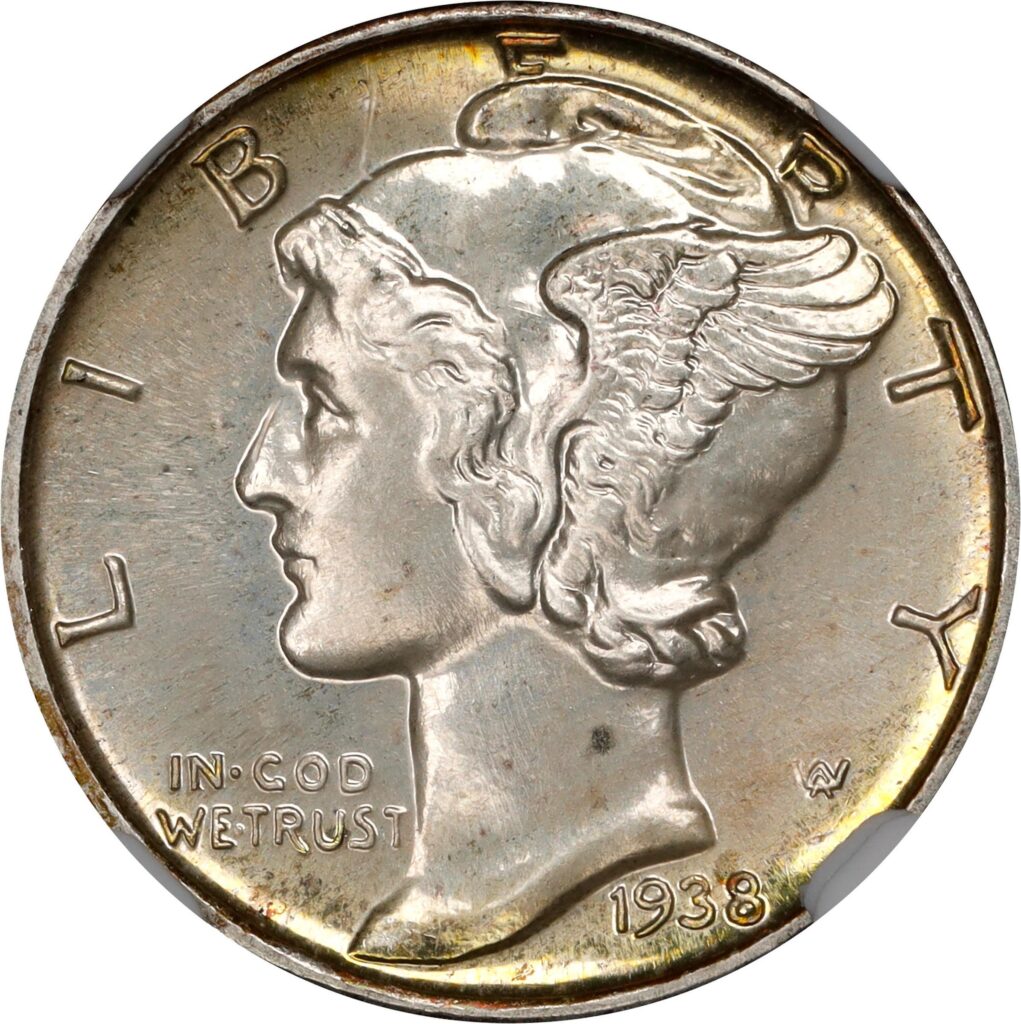
It is especially relevant here that most collectors of Mercury dimes ignore Proofs, though some will build separate sets of Proofs, each of which amounts to just seven coins. The decision to assemble a set of Proofs from 1936 to 1942, or to assemble a set of business strikes (1916-1945), or both, should be made by the individual collector. An alternative is to collect business strikes from 1930 to 1945 and Proofs from 1936 to 1942. This way, a really appealing, short-set might be assembled that is not expensive, as the costs of a 1916-D and the semi-keys from the 1920s need not be incurred.
I am not pushing one collecting project over another. The path that an individual collector takes depends in large part on his or her personality, particular interests and collecting budget. I hope that my remarks and advice are helpful.
The first in this series of discussions is about Mercury dimes that were struck from 1916 to 1919. The second dealt with Mercury dimes from ‘the roaring twenties.’ The third in this series concerns Mercury dimes from the 1930s, including the effects of the Franklin Roosevelt administration on coinage. The topic of the fourth is dimes minted from 1940 to 1945, the period including the second world war. The fifth in this series is about major varieties, as many people assemble sets ‘by date’ (and mint location) plus major varieties. All the first five parts were about business strikes, coins minted by regular or routine means.
A History of Mercury Proof Issues
Proofs are a different matter. Proof Mercury dimes were struck from heavily polished dies and the planchets were specially prepared or carefully selected. Throughout the history of machine-struck coinage, planchets used to strike Proofs were typically smoother than planchets used for business strikes, though this was certainly not always true. The setup and operation of a coining press was different for the production of Proofs.
For the first time since 1915, Proof U.S. silver coins were again sold to the general public in 1936. I have read that Matte Proof 1916 Mercury dimes exist, though I have never seen one. I have seen pattern 1916 dimes, though such patterns that survive tend to be in ‘rough shape’ and are far beside the topic of assembling a set of Proof dimes dating from 1936 to 1942.
Proof U.S. coins were not minted from 1943 to 1949. The late Alan Herbert remarked about the suspension of Proof coinages in an issue of Numismatic News newspaper, in a column that remains available online and was dated Jan. 28, 2009.
Herbert stated that “one reason” why Proof coinage was suspended after 1942 was that “the Philadelphia Mint was tied up” for years “striking the millions of medals that had been authorized for veterans of the war.” The “average” number of medals awarded to each person who served during World war II was three, Herbert reported. According to the National WWII Museum in New Orleans, in 1944 alone, there were 11,623,468 U.S. military personnel, and there were many more who served in 1942 or 1943 yet were no longer serving in 1944.
Before World War II, mintages of Proof coins were small, nowhere near the levels that would be reached in later years. Indeed, the maximum number of 1936 sets that could have been released, 3,830 or so, is not large. More than twenty thousand Proofs of each denomination were distributed in 1942. More than fifty thousand 1950 Proof sets were sold. The mintage of 1957 Proof sets was more than one million! During the middle of the twentieth century, a large number of collectors and other buyers were interested in buying Proof sets. Did U.S. Mint officials in 1936 show much enthusiasm for Proof coins?
Technical Aspects of Proof Mercury Dimes
In the “Annual Report of the Director of The Mint” (Washington: Government Printing Office, 1936, p. 4), it is stated that the “making of Proof coins with highly polished surfaces, which was discontinued some years ago, was resumed during the fiscal year 1936, these coins being sold to the public at a premium over face value to cover their extra cost of manufacture.”
This statement in the official ‘Mint Report’ is simplistic and unhelpful. Furthermore, Proofs do not have “highly polished surfaces”! The dies and sometimes the blanks were polished at the U.S. Mint, not the coins themselves. Sometimes, I wonder about the extent to which mint officials in the past were really knowledgeable about the coins that they were producing.
Proof dimes from 1936 to 1942 tend to have rich, glossy, mirrorlike fields that are or were extremely reflective, though not powerfully so. Generally, the rims and border elements are much better formed and crisper than those of business strike Mercury dimes.
The meeting of the rims and the edge on Proofs tend to be very different on Proofs, too. The relationships between the design elements and the fields on Proofs are different from such relationships on business strikes; this is perhaps the most important difference between Proofs and business strikes, though it is the hardest to explain, if even this phenomenon can be truly explained.
There is no need for a collector of Mercury dimes to think about the technical aspects of Proofs. It would be extremely rare for a 1936 to 1942 Mercury dime that was credibly certified as a Proof to not be a Proof. Indeed, I would be shocked if I saw a CAC approved Proof Mercury dime that was not really a Proof. It is safe and fun to buy these. As business strike Mercury dimes were often incompletely or unevenly struck, in many instances with well worn dies, the crispness and relative fullness of most Proof Mercury dimes are refreshing. When I was a kid, I definitely wanted them. My first Proof coin from the 1940s was a Proof 1941 Lincoln cent. Although I sold them ago, I clearly remember that Proof 1941 cent and a Superb Proof 1942-P nickel, which I wish I still had.

Show off Your Collection in the CAC Registry!
Have CAC coins of your own? If so, check out the CAC Registry–the free online platform to track your coin inventory, showcase your coins by building public sets, and compete with like-minded collectors!
1936
In 1936, collectors could buy Proof coins individually or purchase five coin Proof sets, for small fees. A collector now seeking just one Proof Mercury dime for a type set or to complement a set of business strikes would probably not choose a 1936 dime. Those dating 1942 or 1941 are much less expensive. The CPG-CAC medium retail price estimate for a Proof-66 1941 or 1942 dime is or was $255, and the estimate for a Proof-67 1941 or 1942 is less than $400, as of November 2024.
A Proof-64 1936 is somewhat less expensive than a Proof-65 1936 dime and may be pleasant enough for most interested collectors. On Nov. 20, 2023, Stack’s Bowers auctioned a CAC approved Proof-64 1936 dime for $840. On Dec. 3, 2023, GreatCollections sold a CAC approved, PCGS certified Proof-64 1936 dime for $827.43. On June 23, 2024, GreatCollections sold a CAC approved, NGC certified Proof-64 1936 dime for $867.76.
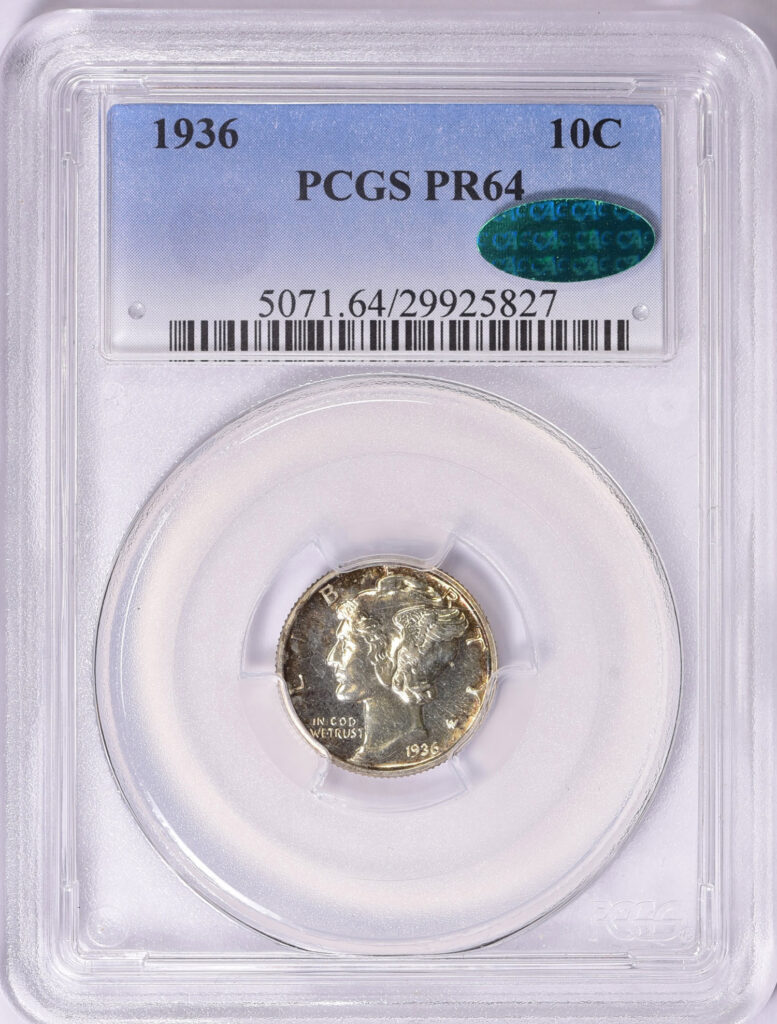
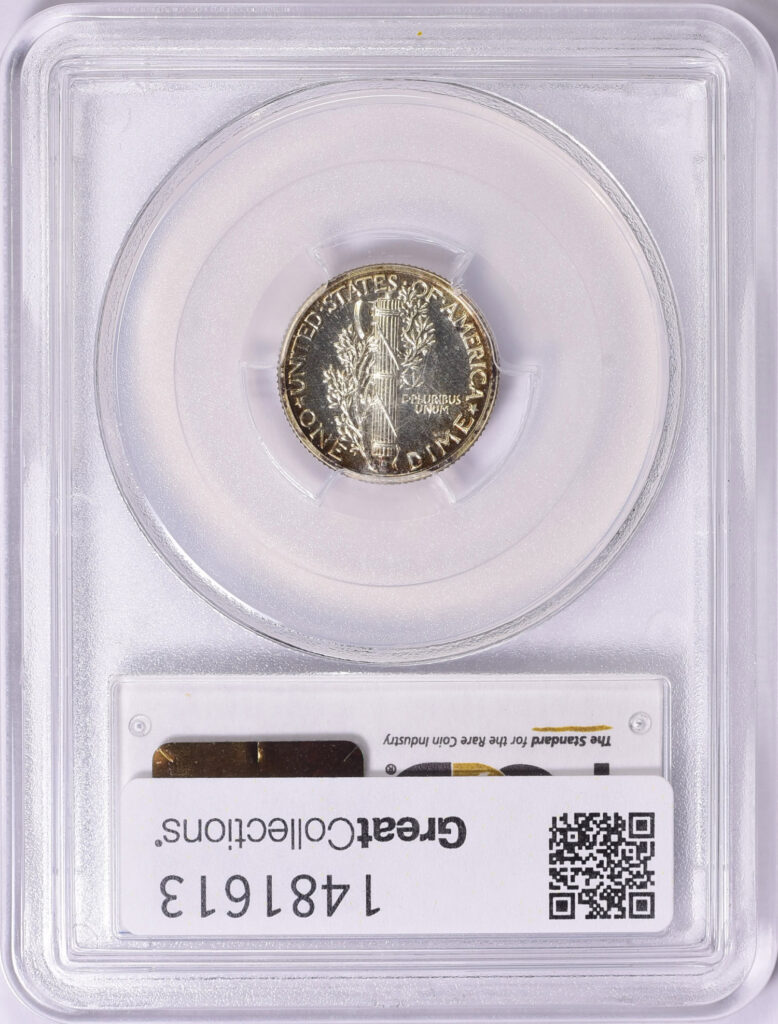
On April 2, 2024, Stack’s Bowers sold a CAC approved Proof-65 1936 Merc for $960. On Aug. 18, 2024, GreatCollections sold a CAC approved Proof-66 1936 for $2,257.20. A CAC certified Proof-67 1936 costs much more.
1937
CAC has stickered 499 Proof 1937 dimes and 17 are in CACG holders, as of Nov. 12, 2024. Of these 516 Proof 1937 dimes, 489 are certified as grading 65 or higher. People who have Proof 1937 dimes that grade less than 65 may wish to submit them to CACG in Virginia, as there is a shortage of Proof 1937 dimes that grade below 65. Numerous collectors are unwilling or unable to buy gem grade (65 and higher) coins.
From February to November 2024, GreatCollections sold four CAC approved, PCGS certified Proof-65 1937 dimes for: $408.10 in February, $368.50 in June, $451 in July and $401.50 in November. Market levels were about the same during this period. Variations in prices realized are due to different bidders and differences in the coins themselves. Also, collectors are generally willing to pay more than dealers, as dealers usually intend to resell coins soon after purchasing them.
1938
While the mintage of Proof 1937 dimes was less than 5800, the mintage of Proof 1938 dimes was more than 8700. Surprisingly, though, the CAC population of Proof 1938 dimes, 544, is not much larger than that of Proof 1937 dimes, 516. It should be easy, though, to obtain either a Proof-65 or a Proof-66 1938.
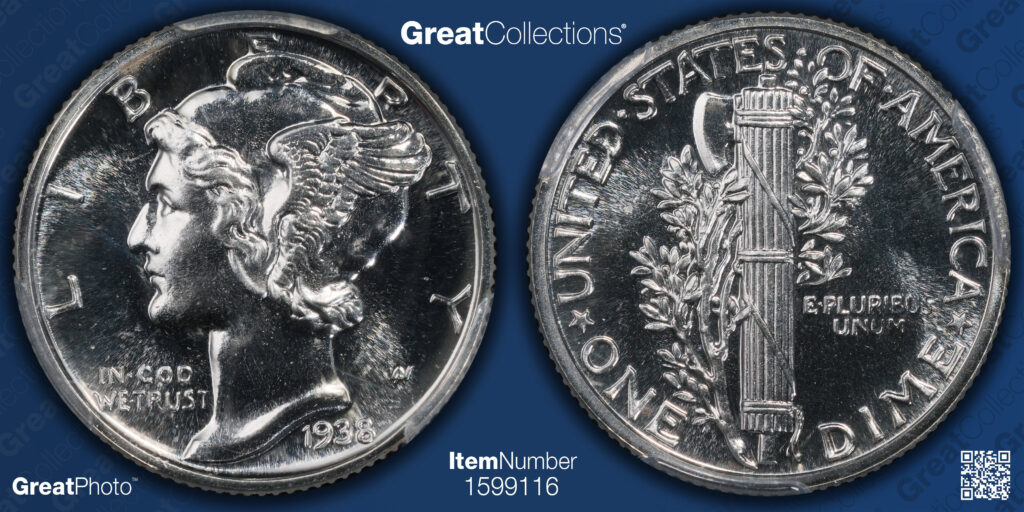
On Feb. 25, 2024, GreatCollections sold a CAC approved Proof-64 1938 dime for $231. In June 2024, GreatCollections sold three CAC approved Proof-66 1938 Mercs, for $352, $286 and $344.30, respectively. On Oct. 23, 2024, Stack’s Bowers sold a CAC approved, NGC certified Proof-66 1938 for $360.
1939
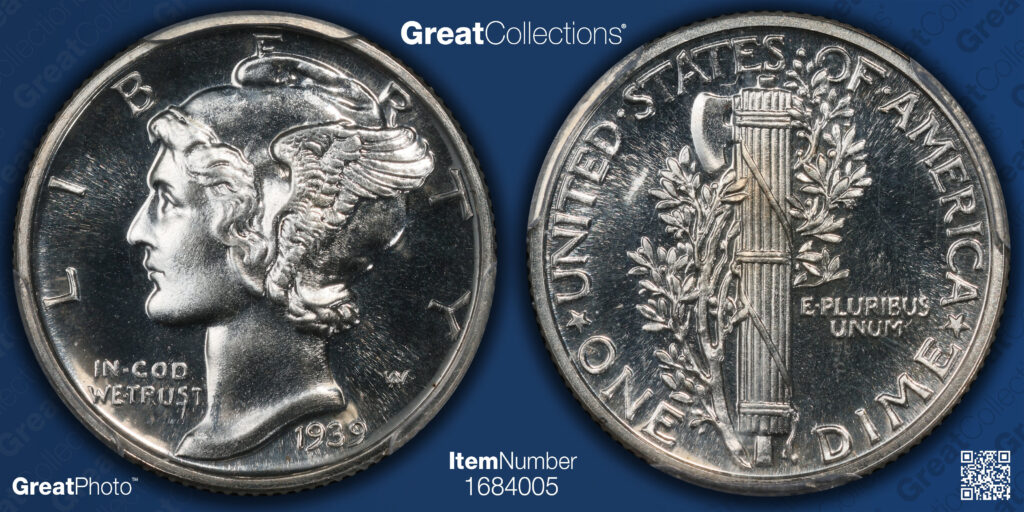
Mintage of Proof 1939 dimes was reported to be 9321. Many of these, however, were harmfully cleaned or otherwise mishandled over the years. There are enough Proof-66 to -67 1939 dimes around, however, such that each interested collector may obtain one for a current retail price without much, if any, waiting.
As of Nov. 12, 2024, the CAC population of Proof 1939 is 653, seventeen of which are in CACG holders. Of these 653 Proof 1939 dimes, 545 grade in the 66 to 67 range. During 2024, GreatCollections sold CAC approved Proof-66 1939 dimes, for $310.20 in March, for $321.54 in May, for $299.20 in May, and $352 in July. This same firm sold CAC approved Proof-67 1939 dimes for: $379.50 in February, $434.50 in March, $451 in May, $497.20 in August, $424.60 in September and $451 in October 2024.
Cameo, Proof Mercury Dimes
There are more Proof 1939 dimes, thirteen, that are CAC approved as qualifying for a ‘Cameo’ designation than there are in total of all the other dates in the 1936 to 1942 series combined, five. In other words, CAC has approved just eighteen Proof Mercs in total as qualifying for a ‘Cameo’ designation, and thirteen of those are dated 1939. Should Mercs that have ‘Cameo’ designations be worth the large premiums that they command?
Cameo Proof Mercs usually are really cool. Rather than the thick white coating that most collectors associate with Cameo Proof U.S. coins, major design elements on Cameo or semi-Cameo Proof Mercs often (not always) feature a glossy, light to medium-white coating, almost ghost-like. Some, though, exhibit a relatively thick white or toned coating that is similar to that found on many Proof silver coins minted before 1916. The appearances of Proof Mercs, even those of the same year, are inconsistent in some ways.
The partly cameo Proof Mercs are often more interesting than the true Cameo Proof Mercs. These tend to feature partial coatings on major design elements that are a little transparent, with varying degrees of whiteness. True Cameo Proofs have deep, relatively dark mirrored fields, which contrast with light-colored coated devices. Some partly cameo Proofs, however, exhibit a mix of coated and sheer glossy textures on design elements and inconsistencies in the fields that are entertaining. In my opinion, there are many Proofs, some partly cameo, that are much more attractive than Cameo Proofs of the same denomination and time period.
As a Proof 1939 Merc with a Cameo designation is likely to bring a very large premium, I suggest that collectors instead seek a somewhat or partly-cameo Proof 1939 Merc that is entertaining, and does NOT have a Cameo designation. A collector who is drawn to Proofs with Cameo contrasts may find that many Proofs that are partly cameo are very appealing, too.
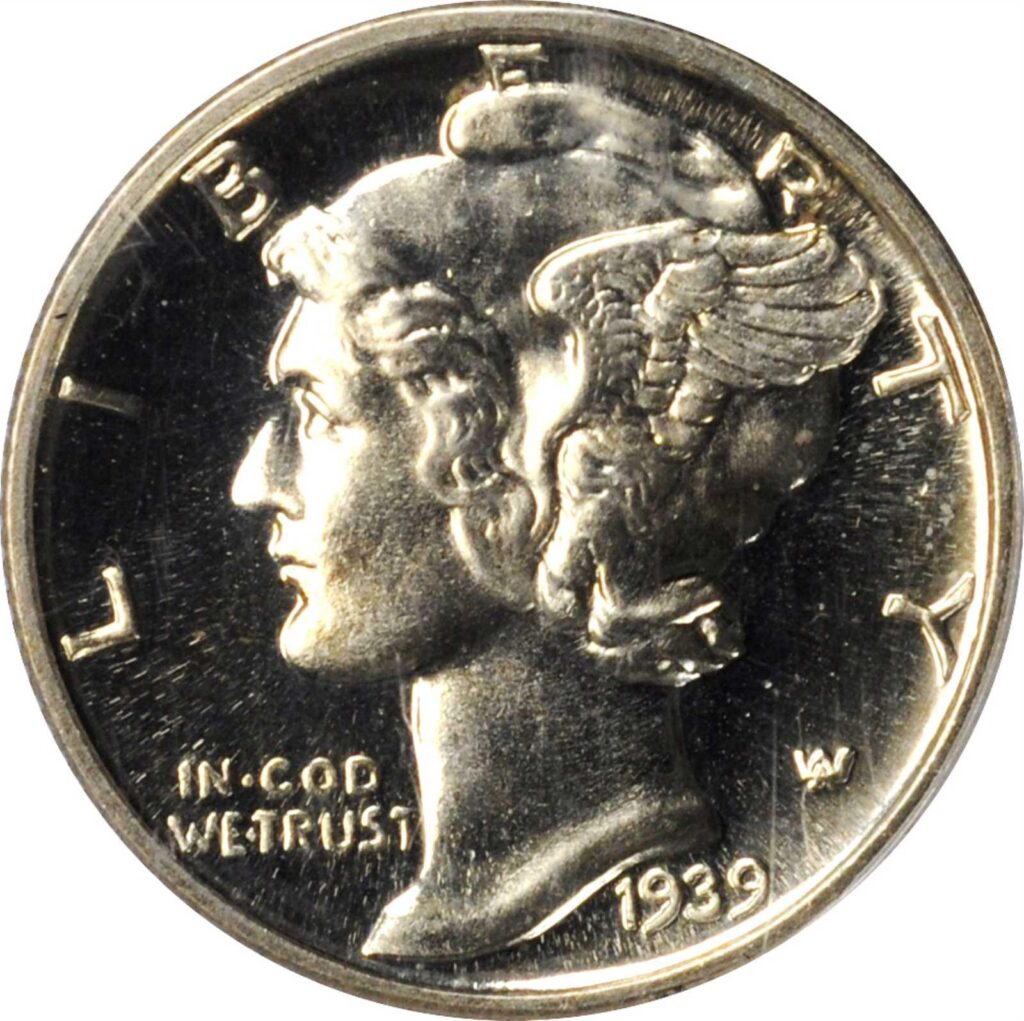
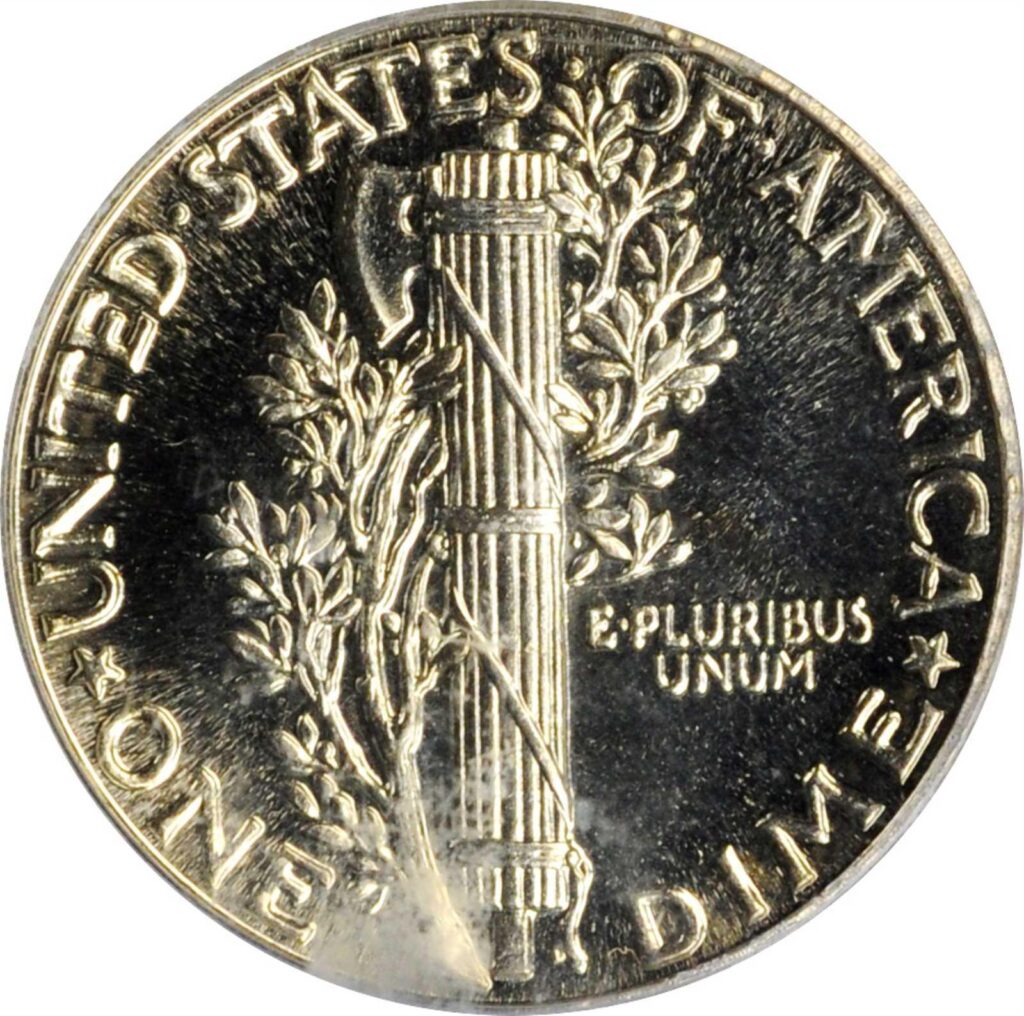
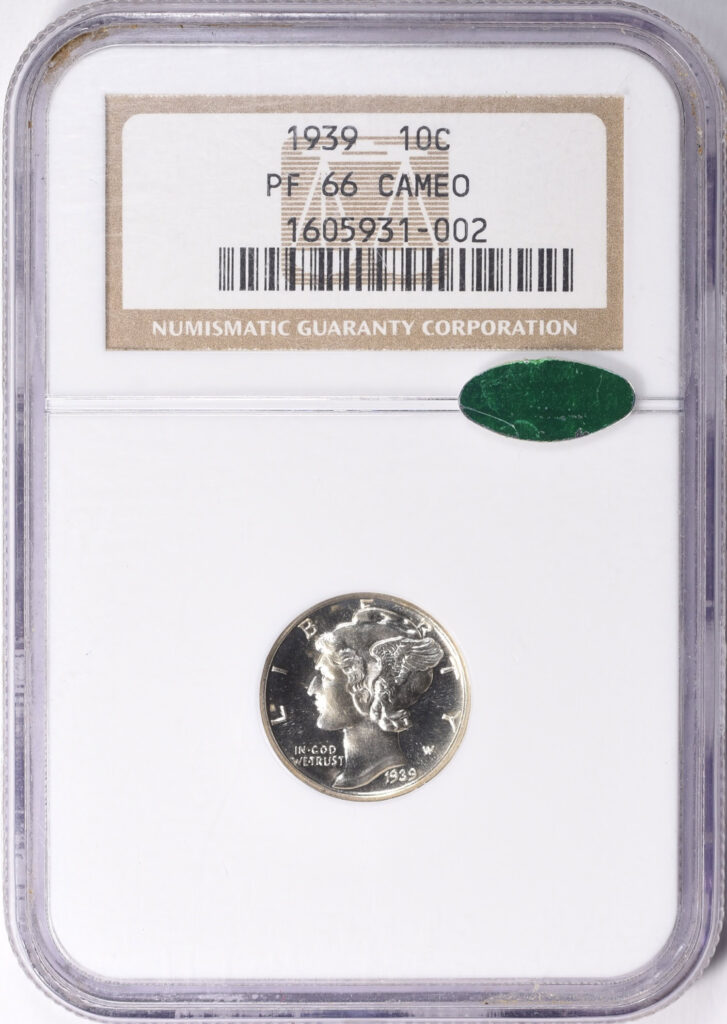
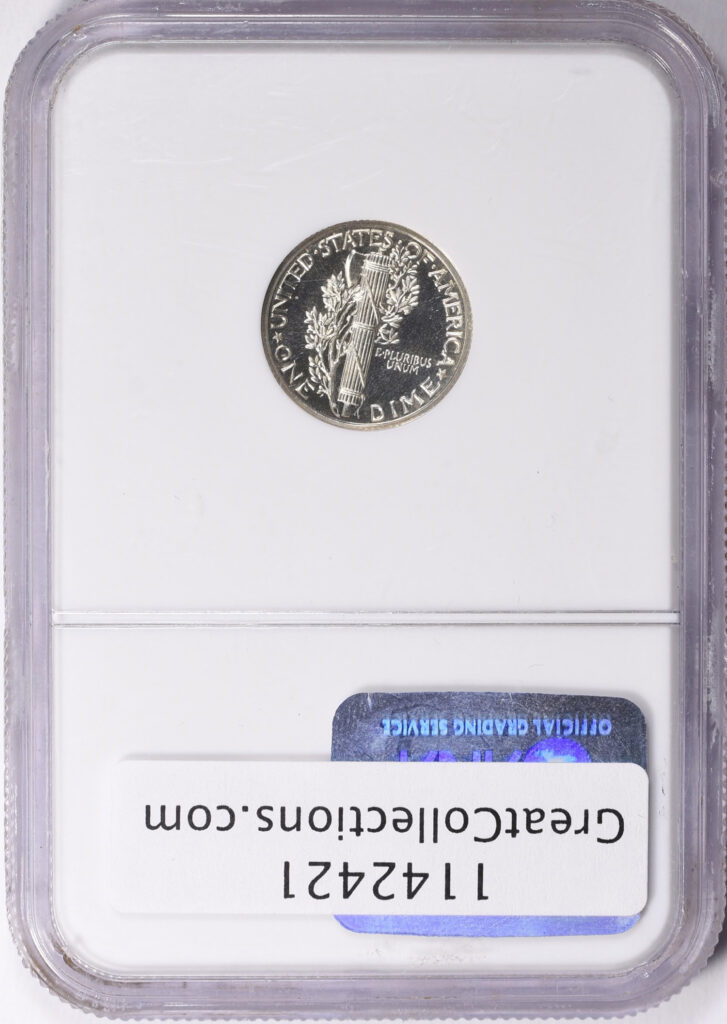
On April 10, 2022, GreatCollections sold a CAC approved, Proof-66-Cameo 1939 dime for $3,136.11. Without a ‘Cameo’ designation, this coin would probably not have realized even one-fifth as much. In the present and near future, there are likely to be CAC approved Proof-66 1939 dimes available for less than $425 each. It would not make sense for a beginner or a budget-minded collector to spend more than $1,500 for a Proof 1939 dime, regardless of grade or designation.

1940
In 1940, the mintage of Proof Mercs increased again to more than 11,800, around 27% more than the reported total production of Proof 1939 Mercs. Actually, from 1936 to 1942, a majority of collectors who acquired Proofs from the Philadelphia Mint were interested in more than one denomination, often whole sets from the cent to the half dollar.
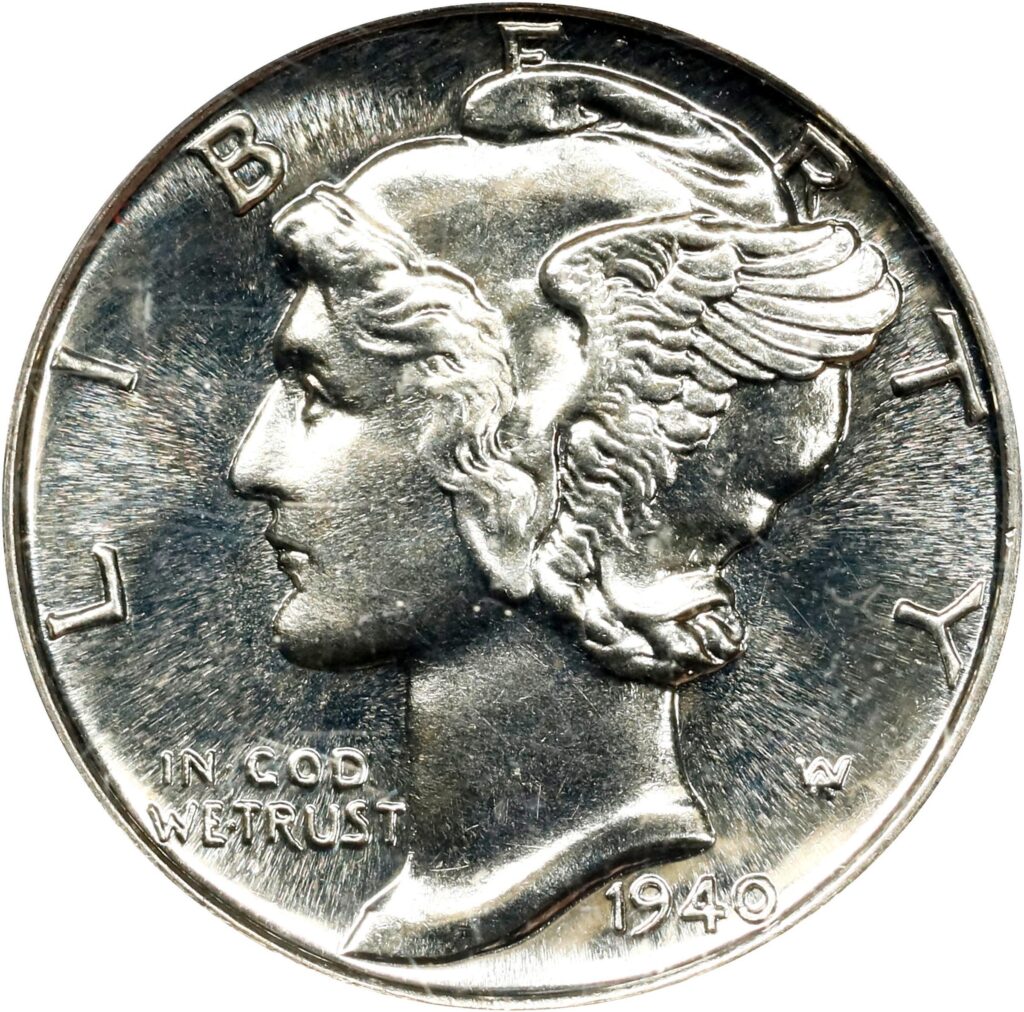
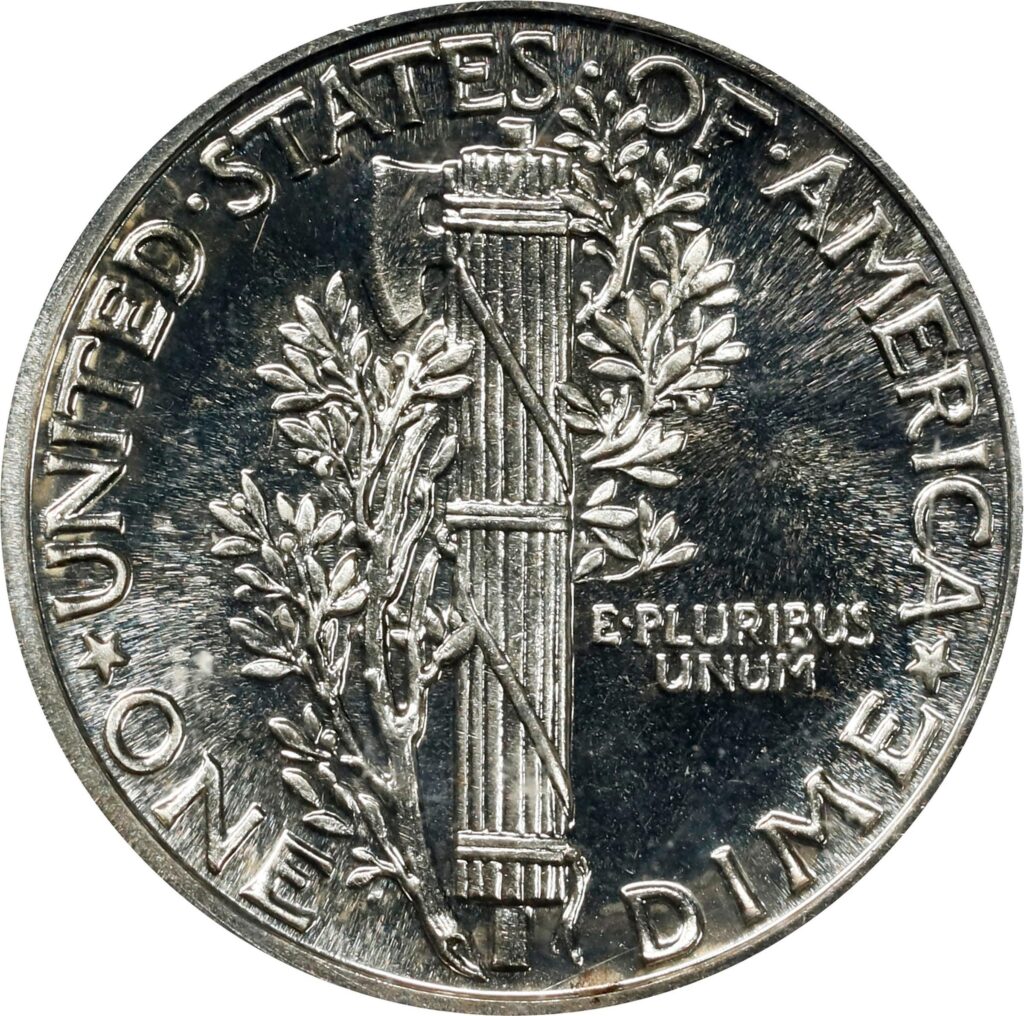
Mercury dimes became extremely popular after the Roosevelt dime replaced the Mercury dime in 1946. Mercs continued to widely circulate until around 1965. People received Mercs in change during the 1990s, though rarely. After 1967, the vast majority of Mercs were set aside or melted for their silver content. Collectors remained enthusiastic about them, and many collectors of well circulated Mercs dreamed of Proof Mercs.
As of Nov. 12, 2024, the CAC population of Proof 1940 dimes, 637, is actually lower than the CAC pop, 656, of Proof 1939 dimes. The CAC population of 1940 dimes could surpass the number of Proof 1939 dimes over time, as relatively low grade Proof Mercs, many of which remain raw, are submitted to CACG in Virginia. In past years, a dealer might not send a PCGS or NGC certified Proof-63 1939 to 1942 Merc to CAC in New Jersey as the cost of stickering might outweigh the financial gains, especially since many such coins probably would not receive stickers anyway.
Oddly, as of Nov. 12, 2024, the CPG-CAC medium retail estimate for a Proof-65 1940, $225, was not much lower than the estimate for a Proof-65 1939, $245. The CAC population of Proof-65 1940 dimes was 102, exactly 50% higher than the CAC population of Proof-65 1939 dimes, 68.
In contrast, the CPG-CAC medium retail estimate for a Proof-66 1940, $280, was much lower than the corresponding estimate for a Proof-66 1939, $420. On April 7, 2024, GreatCollections sold a CAC approved Proof-66 1940 for $209. On Nov. 3, GreatCollections sold a CAC approved Proof-66 1940 for $211.75.
1941 and 1942
The 1941 and 1942 are not scarce. It is probably easy to find these at medium size coin shows.
In 1941, the mintage of Proof Mercs was more than 16,500, about a 40% increase over the mintage in 1940. More than eight hundred have been CAC approved. As of Nov. 12, 2024, 295 1941 dimes have been CAC approved as Proof-66. There have not been as many public sales of these in 2024 as I would have expected there to be. Many must trade at coin shows or via mail-order.
On May 5, GreatCollections sold a CAC approved Proof-66 1941 dime for $260.70. On Sept. 15, GreatCollections sold a different CAC approved Proof-66 1941 dime for $203.50.
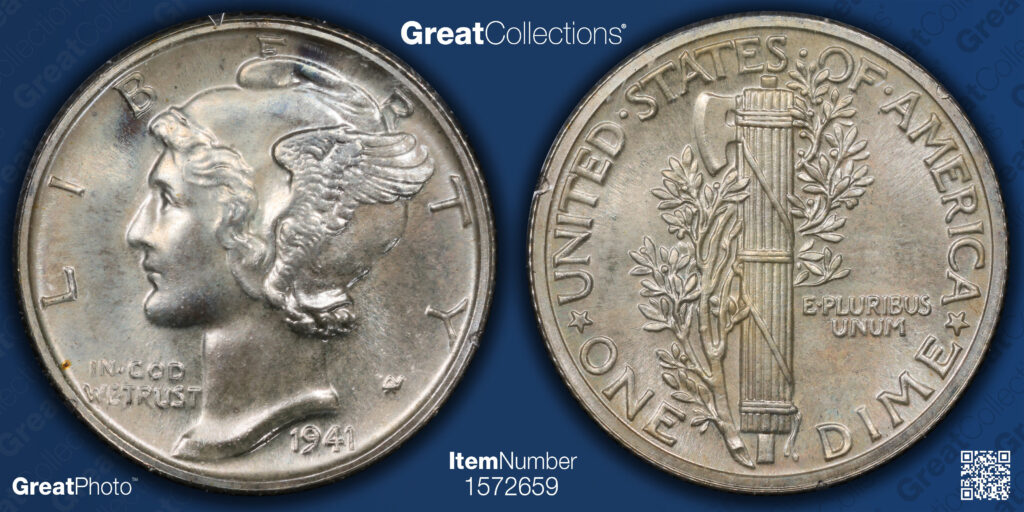
The mintage for the Proof 1942 surged to 22,329, 35% above the 1941 total, almost 90% above the 1940 total, and more than five times the mintage of Proof Mercury dimes in 1936, 4130. With a CAC population of more than 200 in Proof-65, more than 450 in -66 and around 550 in the -67 range, it should not be hard to find a gem quality Proof 1942 dime.
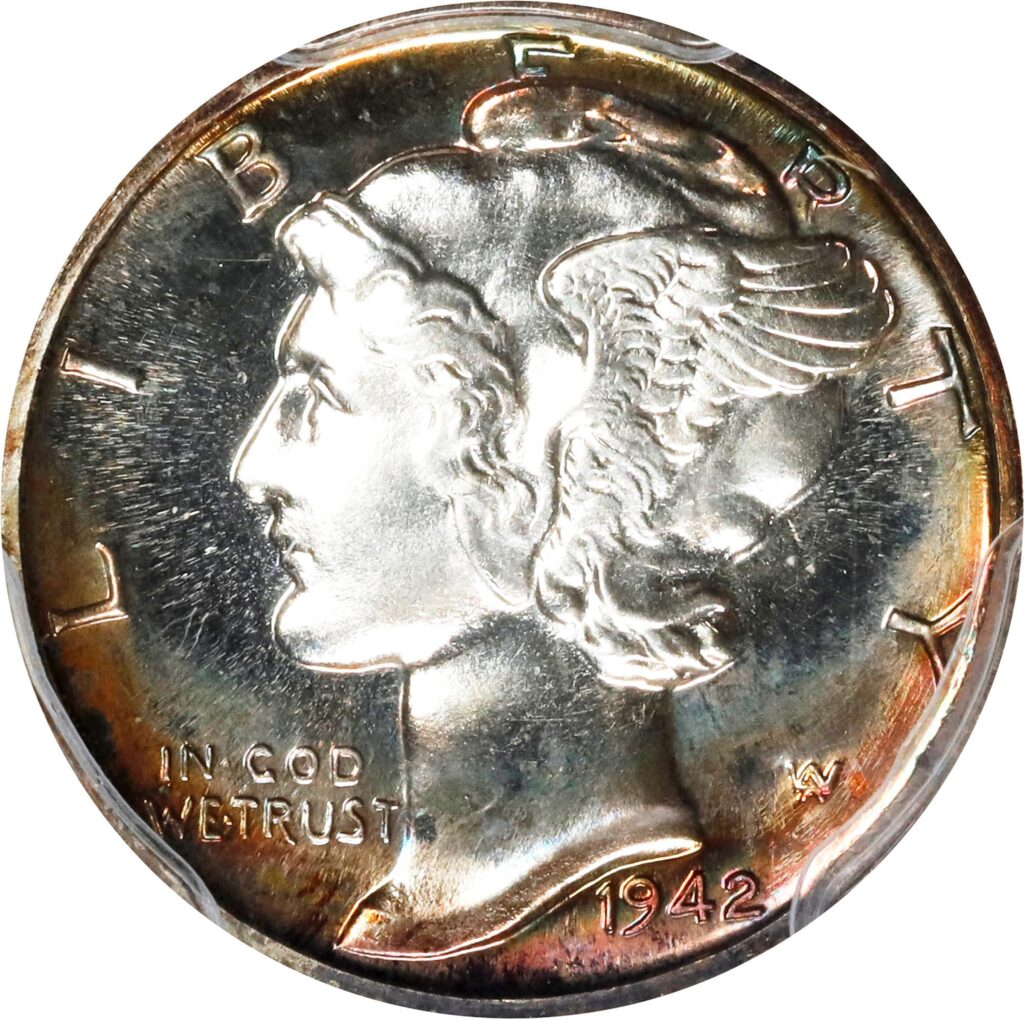
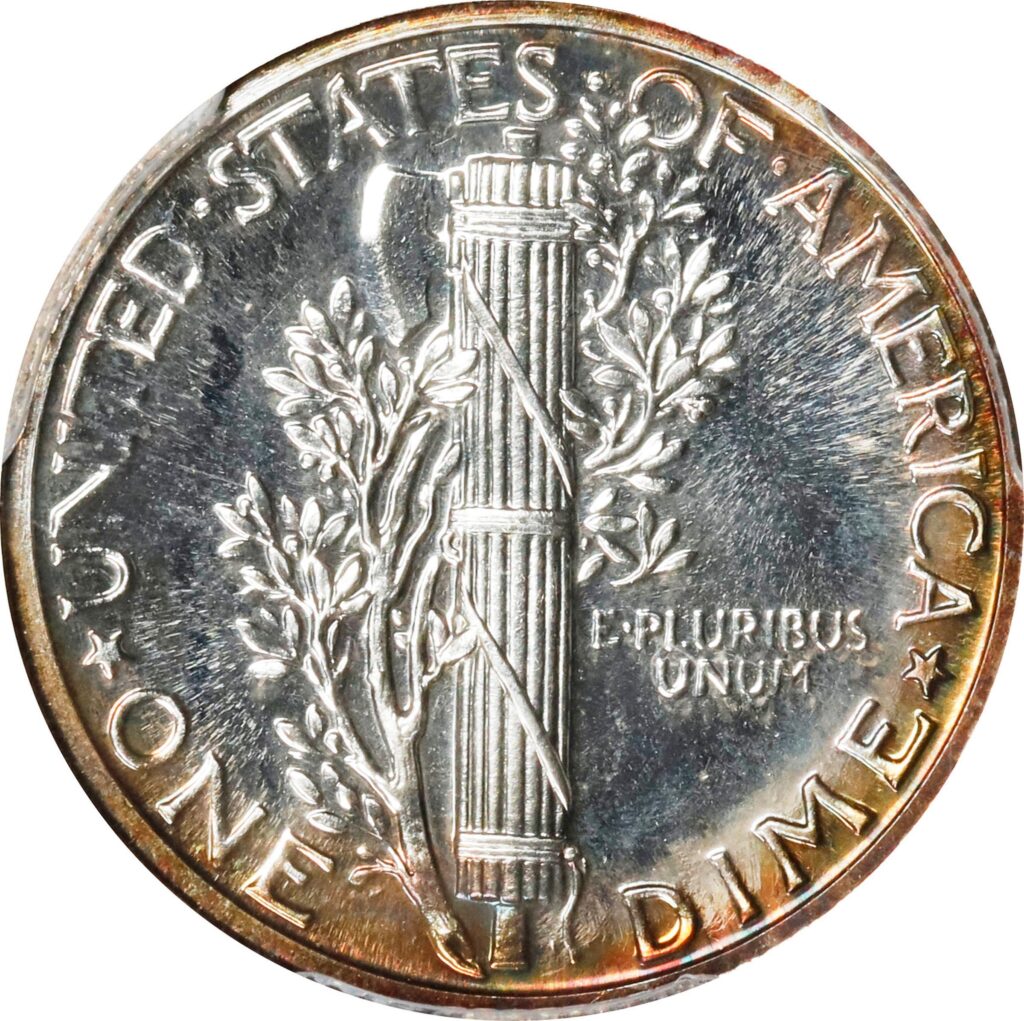
On Oct. 23, 2024, Stack’s Bowers sold a CAC approved Proof-65 1942 dime for $216. On April 2, Stack’s Bowers sold two CAC approved Proof-67 1942 dimes, for $408 and $480, respectively. Both of these results were strong. It is possible that these both have notable, partial cameo contrasts, which are cool. Again, I recommend that collectors interested in ‘Cameo Proofs’ search for coins that are partial, even predominantly cameo, without any such designation, rather than pay a large premium for a Proof Mercury dime that has a ‘Cameo’ designation.
Gem Proof 1942 dimes can be purchased for less than $400. On Oct. 20, 2024, GreatCollections auctioned a CAC approved Proof-65 1942 dime for $181.50, which was not a strong price. On April 21, GreatCollections sold a CAC approved Proof-66 1942 for $225.50.
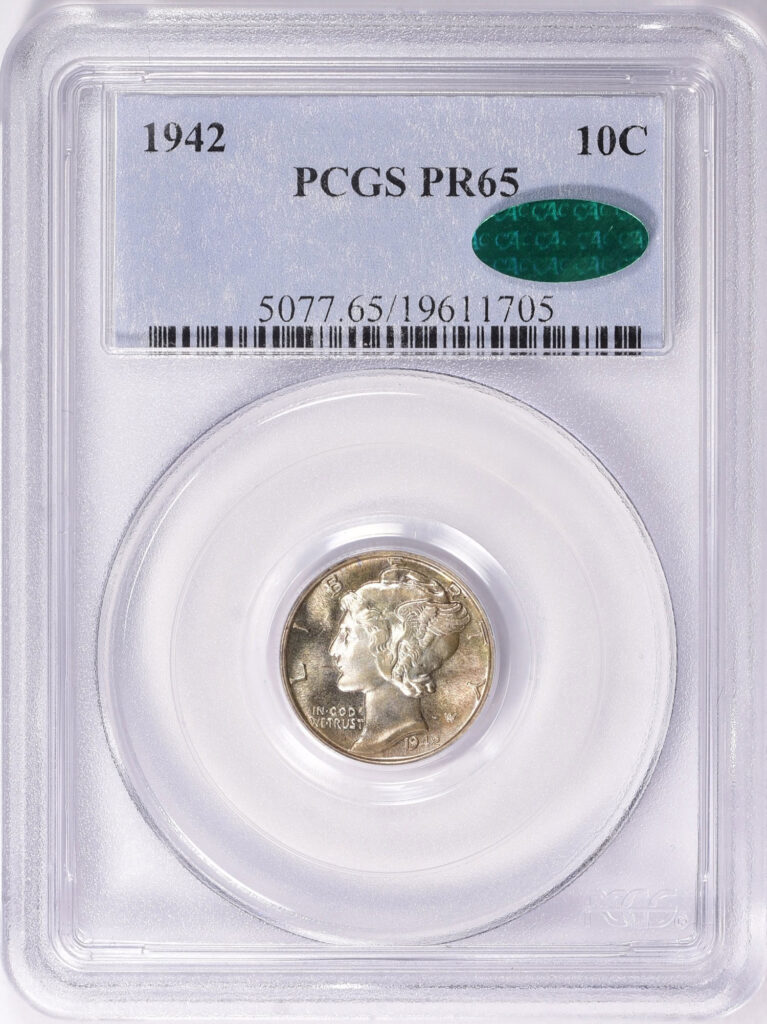
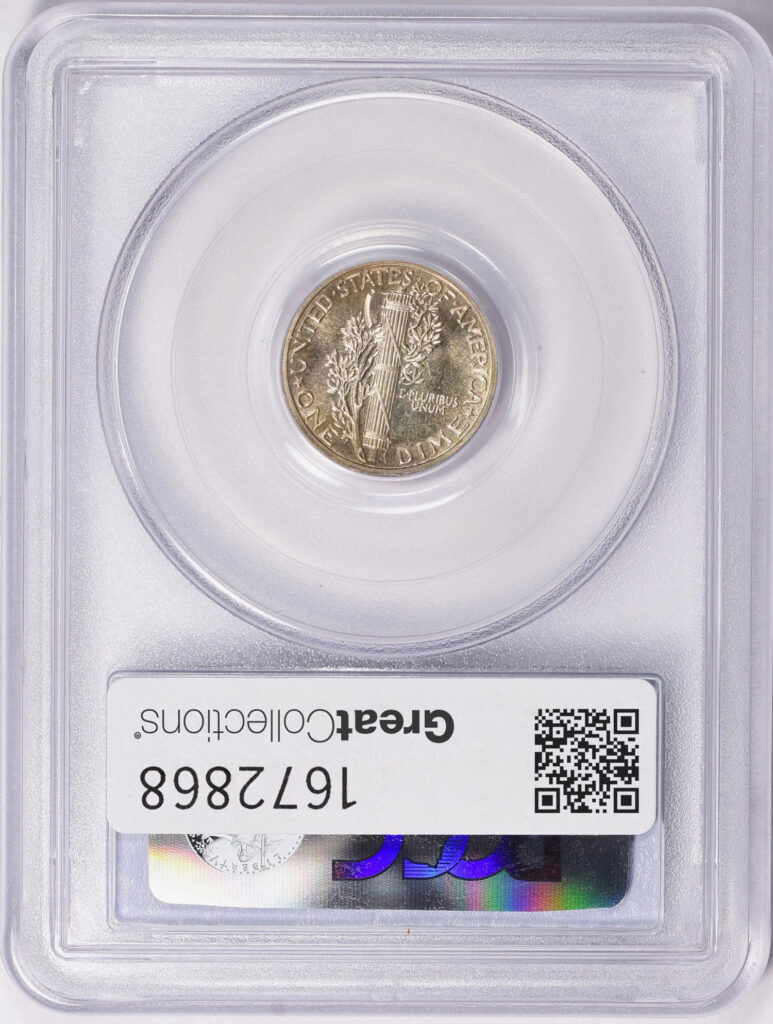
Each collector has the option of paying far more for highly certified Proof coins from 1936 to 1942. On Oct. 27, GreatCollections sold a CAC approved Proof-68 1942 dime for $1161.60. Earlier, on Sept. 15, 2019, GreatCollections sold a CAC approved Proof-69 1942 dime for $96,250! If I was collecting Proof Mercs, I would rather pay around $200 for a CAC approved Proof-65 1942 than nearly $100,000 for a CAC approved Proof-69 1942 dime, though images of the latter are enticing.
In sum, a set of Proof-64 to -66 Mercury dimes from 1936 to 1942 is not difficult to assemble, and does not cost a large amount of money, in the context of vintage U.S. coins. Proof Mercs are very different from business strike Mercs. Moreover, these are really neat and entertaining parts of twentieth century U.S. coinage. Most interested collectors find that assembling a set of Proof Mercs is a very enjoyable activity.
Images are shown courtesy of GreatCollections and Stack’s Bowers Galleries.
Copyright © 2024 Greg Reynolds
About the Author
Greg is a professional numismatist and researcher, having written more than 775 articles published in ten different publications relating to coins, patterns, and medals. He has won awards for analyses, interpretation of rarity, historical research, and critiques. In 2002 and again in 2023, Reynolds was the sole winner of the Numismatic Literary Guild (NLG) award for “Best All-Around Portfolio”.
Greg has carefully examined thousands of truly rare and conditionally rare classic U.S. coins, including a majority of the most famous rarities. He is also an expert in British coins. He is available for private consultations.
Email: Insightful10@gmail.com
